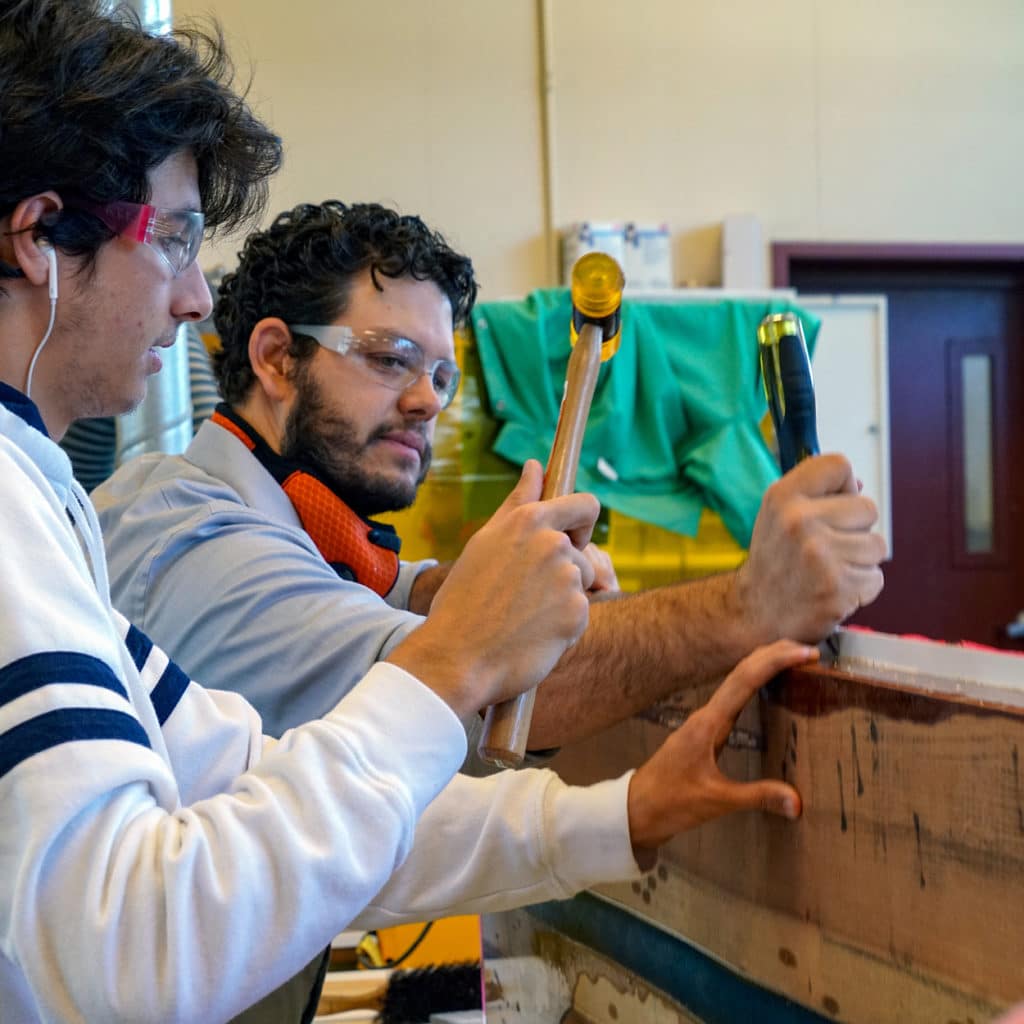Product Design
With the chance to learn cutting-edge skills and to utilize both state-of-the-art equipment and tried and true, students are empowered to confidently face the dynamic technological developments of the 21st century.
Students utilize “additive design” techniques as they develop projects from concept to finished product. Student designers are encouraged to experiment, work through trial and error, and utilize creative solutions as they critique each other’s work to come up with their best project designs.
They also learn the value and importance of collaboration in the design process and will team up to complete larger projects. Key to successfully developing projects are charting time lines and work flow parameters, along with detailed blueprints, plans and design specifications.
MSA companion class: Foundation Art or Digital Arts 1. Introduction to Design Thinking and Tools (UC-g approved elective). Students are introduced to design thinking, collaboration, computer aided design, traditional construction (woodshop), modern construction (3D printer, laser cutter, CNC milling), electronics, software and presentation.
MSA companion class: Visual Arts of your choice
Project Planning (UC-g approved elective)
Working in teams, students produce three products of varying complexity and duration, progressing through projects that take three weeks, 6 weeks and 6 months. Project teams incorporate varying skill sets and interests to facilitate a successful project whereby needed resources can be found within the peer group. By their second year, students have generally decided on an area of focus and are able to utilize the skills learned in their first year. Gantt charts are used to plan and deliver on milestones based on specific tasks for each project. Students identify areas where they must bolster their skills i.e. programming, tools, etc.
Year-long customer-based project.
Students participate in a year-long project in conjunction with a specific need for a local “customer” (most likely an issue or need identified on campus or in the community). For example, perhaps there is a specialized prop needed for an MSA Theatre production. Students utilize the tools in the design center and are mentored by faculty.
Year-long capstone project.
Students spend the entire school year planning, prototyping and testing a complete product that they pitch to industry representatives. Full product development would potentially take a product to market. Students are mentored by faculty or an industry professional in their field of interest.
Awards + Accolades
2024
Lenaea Theatre Festival
-
Gold, Scenic Design












